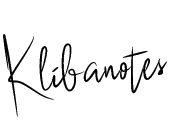I was first introduced to the term ‘anaphora’ in the Catholic Catechism, where it refers to a portion of the liturgy where bread and wine are consecrated into the body and blood of Christ.
When used in reference to the Catholic liturgy, or in other Christian traditions that espouse the term, it describes the return of the ‘fruit of the earth and work of human hands’ to God — the wheat nurtured and reaped by the farmer, cooked by the baker, and bought by the community, is ‘carried back’ to God as gift and sacrifice at that moment.
The Greek Anaphora (ἀναφορά) translates roughly as ‘carry back’.
“Hook Science” is a series by author Robert Barzilauskas exploring rhetorical tools in marketing copy.
In this liturgical application, the meaning of the word is uniquely performed — and for those who believe, fully encapsulates all of nature and supernatural realities.
However, there are other applications of the term used in linguistics, and for rhetorical effect in political, artistic, or corporate spheres.
Linguistics
In linguistics, quite often we will use a pronoun as anaphor to “carry back” our reference to a noun previously used. For example, a look at the following sentence reveals that we would have no understanding of “it“, without “ball“.
“Jim threw the ball.
It flew very far.”
Political Speech
In the rhetorical sense, an anaphora is a repetition of words at the beginning of a clause or stanza that brings emphasis and emotion to a thesis.
One of the most famous examples is Dr. Martin Luther King’s “I Have a Dream” speech. The way we remember this work today, is actually calling to mind the use of the anaphora in repetition, which condenses for public memory the entirety of its message within.
The Arts
In the performing arts you will find the use of anaphoras prevalent in poetry and popular music.
Shania Twain’s performance of ”You’re Still The One”, uses an anaphor in repetition throughout the chorus to emphasis the resilient thesis of the song.
In Tom Waits’ “You Can Never Hold Back Spring”, he uses the anaphora at the beginning of each stanza, where thereafter each premise supports his likewise resilient conclusion.
In Tom Waits’ “You Can Never Hold Back Spring”, he uses the anaphora at the beginning of each stanza, where thereafter each premise supports his likewise resilient conclusion.
Corporate Use
In corporate applications, anaphoras can be used in a similar way. They can be leveraged in a single piece of collateral, campaign, or company slogan.
Aleve: All day strong, All day long
Estee Lauder: More defined, More Conditioned,
More beautiful lashes.
Saturn: A different kind of Company,
A different kind of car.
Panasonic: A better life, A better world
What is interesting to me, is that slogans themselves can be interpreted as anaphoras, along with their counterparts – epistrophes, which are the same devices used at the end of a clause.
The slogan, whether or not it contains these rhetorical devices within its construction, is itself the anaphora or epistrophe of an organization, a particular campaign, or single piece of marketing collateral. It is supported by the value propositions relayed within — always “carrying back” to the slogan. For example:
For you, and our future.
– Anaphora
These are our products.
They work in this way,
with these particular features.
They have this affect on your life,
and on the environment,
and on our community.
The Company: For you, and our future.
– Epistrophe
Lastly, in a 2016 Bulgarian study, Technology and Communication industries were found to use anaphoras in their slogans 23% of the time, and almost four times more than any other industry. I would be interested to know more about this finding, its data in relation to the world stage, and why that proclivity might exist. Perhaps in another post.
Make sure to DISCOVER more about Klibanos® | Media Services, and how we can create beautiful experiences, together.
Robert Barzilauskas, MA – Founder / Producer


